Stabilized beta-catenin functions through TCF/LEF proteins and the Notch/RBP-Jkappa complex to promote proliferation and suppress differentiation of neural precursor cells
- PMID: 18852283
- PMCID: PMC2593432
- DOI: 10.1128/MCB.01962-07
Stabilized beta-catenin functions through TCF/LEF proteins and the Notch/RBP-Jkappa complex to promote proliferation and suppress differentiation of neural precursor cells
Abstract
The proliferation and differentiation of neural precursor cells are mutually exclusive during brain development. Despite its importance for precursor cell self renewal, the molecular linkage between these two events has remained unclear. Fibroblast growth factor 2 (FGF2) promotes neural precursor cell proliferation and concurrently inhibits their differentiation, suggesting a cross talk between proliferation and differentiation signaling pathways downstream of the FGF receptor. We demonstrate that FGF2 signaling through phosphatidylinositol 3 kinase activation inactivates glycogen synthase kinase 3beta (GSK3beta) and leads to the accumulation of beta-catenin in a manner different from that in the Wnt canonical pathway. The nuclear accumulated beta-catenin leads to cell proliferation by activating LEF/TCF transcription factors and concurrently inhibits neuronal differentiation by potentiating the Notch1-RBP-Jkappa signaling pathway. beta-Catenin and the Notch1 intracellular domain form a molecular complex with the promoter region of the antineurogenic hes1 gene, allowing its expression. This signaling interplay is especially essential for neural stem cell maintenance, since the misexpression of dominant-active GSK3beta completely inhibits the self renewal of neurosphere-forming stem cells and prompts their neuronal differentiation. Thus, the GSK3beta/beta-catenin signaling axis regulated by FGF and Wnt signals plays a pivotal role in the maintenance of neural stem/precursor cells by linking the cell proliferation to the inhibition of differentiation.
Figures
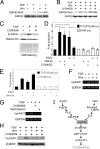

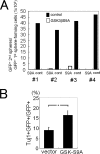
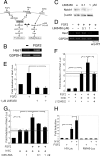
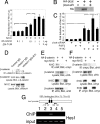

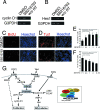
Similar articles
-
A growth-promoting signaling component cyclin D1 in neural stem cells has antiastrogliogenic function to execute self-renewal.Stem Cells. 2014 Jun;32(6):1602-15. doi: 10.1002/stem.1613. Stem Cells. 2014. PMID: 24302516
-
Interaction of Wnt/β-catenin and notch signaling in the early stage of cardiac differentiation of P19CL6 cells.J Cell Biochem. 2012 Feb;113(2):629-39. doi: 10.1002/jcb.23390. J Cell Biochem. 2012. PMID: 21956839
-
Porphyromonas gingivalis lipopolysaccharide inhibits the osteoblastic differentiation of preosteoblasts by activating Notch1 signaling.J Cell Physiol. 2010 Oct;225(1):106-14. doi: 10.1002/jcp.22201. J Cell Physiol. 2010. PMID: 20648628
-
Calcium, calcium-sensing receptor and colon cancer.Cancer Lett. 2009 Mar 8;275(1):9-16. doi: 10.1016/j.canlet.2008.07.001. Epub 2008 Aug 23. Cancer Lett. 2009. PMID: 18725175 Review.
-
Expression dynamics and functions of Hes factors in development and diseases.Curr Top Dev Biol. 2014;110:263-83. doi: 10.1016/B978-0-12-405943-6.00007-5. Curr Top Dev Biol. 2014. PMID: 25248479 Review.
Cited by
-
The role of GSK3beta in the development of the central nervous system.Front Biol (Beijing). 2012 Jun;7(3):212-220. doi: 10.1007/s11515-012-1222-2. Front Biol (Beijing). 2012. PMID: 25688261 Free PMC article.
-
Convergence of Notch and beta-catenin signaling induces arterial fate in vascular progenitors.J Cell Biol. 2010 Apr 19;189(2):325-38. doi: 10.1083/jcb.200904114. J Cell Biol. 2010. PMID: 20404113 Free PMC article.
-
Wnt3a/GSK3β/β-catenin Signalling Modulates Doxorubicin-associated Memory Deficits in Breast Cancer.Mol Neurobiol. 2024 Aug;61(8):5441-5458. doi: 10.1007/s12035-023-03910-x. Epub 2024 Jan 10. Mol Neurobiol. 2024. PMID: 38198045
-
Cell Type-Specific Transcriptional Control of Gsk3β in the Developing Mammalian Neocortex.Front Neurosci. 2022 Mar 23;16:811689. doi: 10.3389/fnins.2022.811689. eCollection 2022. Front Neurosci. 2022. PMID: 35401100 Free PMC article.
-
Attenuation of Tumor Suppressive Function of FBXO16 Ubiquitin Ligase Activates Wnt Signaling In Glioblastoma.Neoplasia. 2019 Jan;21(1):106-116. doi: 10.1016/j.neo.2018.11.005. Epub 2018 Dec 5. Neoplasia. 2019. PMID: 30530053 Free PMC article.
References
-
- Alves-Guerra, M. C., C. Ronchini, and A. J. Capobianco. 2007. Mastermind-like 1 is a specific coactivator of beta-catenin transcription activation and is essential for colon carcinoma cell survival. Cancer Res. 678690-8698. - PubMed
-
- Amit, M., M. K. Carpenter, M. S. Inokuma, C. P. Chiu, C. P. Harris, M. A. Waknitz, J. Itskovitz-Eldor, and J. A. Thomson. 2000. Clonally derived human embryonic stem cell lines maintain pluripotency and proliferative potential for prolonged periods of culture. Dev. Biol. 227271-278. - PubMed
-
- Andjelkoviæ, M., D. R. Alessi, R. Meier, A. Fernandez, N. J. Lamb, M. Frech, P. Cron, P. Cohen, J. M. Lucocq, and B. A. Hemmings. 1997. Role of translocation in the activation and function of protein kinase B. J. Biol. Chem. 27231515-31524. - PubMed
-
- Belham, C., S. Wu, and J. Avruch. 1999. Intracellular signalling: PDK1-a kinase at the hub of things. Curr. Biol. 9R93-R96. - PubMed
Publication types
MeSH terms
Substances
LinkOut - more resources
Full Text Sources
Other Literature Sources
Medical
Molecular Biology Databases
Miscellaneous
